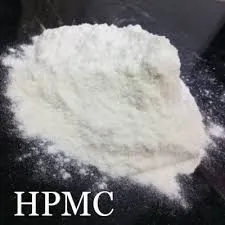
Nov . 09, 2024 04:47 Back to list
Hydroxypropyl Methylcellulose Applications and Benefits in Modern Pharmaceutical Formulations
Hydroxypropyl Methylcellulose (HPMC) A Comprehensive Overview
Hydroxypropyl Methylcellulose, commonly referred to as HPMC, is a semi-synthetic polymer derived from cellulose, a natural polymer found in the cell walls of plants. HPMC is widely used in various applications across multiple industries due to its exceptional properties, such as its ability to form gels, its water-solubility, and its versatility.
Chemical Structure and Properties
HPMC is created through the modification of cellulose. The cellulose molecules are chemically treated with propylene oxide and methyl chloride, which introduces hydroxypropyl and methyl groups. This chemical modification enhances the solubility of cellulose in water and alters its physical and chemical properties. HPMC is typically available in various grades, which differ in the degree of substitution of the hydroxyl groups and the viscosity of the resulting solutions.
One of the distinctive features of HPMC is its ability to form a gel-like consistency when mixed with water, making it an excellent thickening agent. It is also stable under a wide range of pH levels and does not react with most electrolytes, which adds to its usability in various formulations. Additionally, HPMC is non-toxic and biodegradable, making it an environmentally friendly choice for many applications.
Applications in Pharmaceuticals
In the pharmaceutical industry, HPMC is treasured for its role as a binder, thickener, and film-forming agent. It is commonly used in the formulation of tablets, capsules, and extended-release medications. The hydrophilic nature of HPMC allows it to swell and gel upon contact with water, which can control the release of active pharmaceutical ingredients (APIs). This property is particularly useful in developing controlled-release formulations that provide prolonged therapeutic effects while minimizing side effects.
Moreover, HPMC is also used as an excipient in eye drops and other ophthalmic preparations due to its ability to enhance viscosity and provide sustained lubrication. Its biocompatibility makes it suitable for various medical applications, including coatings for surgical implants and drug delivery systems.
hydroxypropyl methylcellulose hpmc

Role in Food Industry
In the food industry, HPMC serves as a vegetarian alternative to gelatin. It is frequently used as a thickening and stabilizing agent in various food products, including sauces, dressings, and bakery items. Because it is odorless, tasteless, and does not alter the flavor of food, HPMC is ideal for enhancing the texture and appearance of processed foods.
HPMC also plays a role in the gluten-free food market. It can improve the texture and elasticity of gluten-free baked goods, which often lack the structural integrity provided by traditional gluten. Incorporating HPMC into gluten-free formulations helps to retain moisture and prolong shelf life, addressing one of the primary concerns in gluten-free baking.
Construction and Building Materials
In the construction and building materials sector, HPMC is utilized in the formulation of cement-based adhesives, plasters, and tile grouts. It acts as a thickening agent, helping to improve the workability and consistency of these materials. The water-retaining properties of HPMC also ensure that the mixtures maintain their moisture for longer periods, allowing for better adhesion and curing.
The use of HPMC in construction materials enhances the durability and overall performance of the products, minimizing shrinkage and cracking. Additionally, HPMC's ability to stabilize foams allows for the creation of lightweight building materials, contributing to energy efficiency in construction projects.
Conclusion
Hydroxypropyl Methylcellulose is a remarkable compound with diverse applications that span across pharmaceuticals, food, and construction industries. Its unique properties make it an invaluable ingredient that enhances the performance and quality of various products. As industries continue to evolve, the demand for HPMC is expected to grow, driven by the need for sustainable and effective solutions in product formulation. With its versatility and functionality, HPMC continues to play a crucial role in modern scientific and industrial advancements.
-
Versatile Hpmc Uses in Different Industries
NewsJun.19,2025
-
Redispersible Powder's Role in Enhancing Durability of Construction Products
NewsJun.19,2025
-
Hydroxyethyl Cellulose Applications Driving Green Industrial Processes
NewsJun.19,2025
-
Exploring Different Redispersible Polymer Powder
NewsJun.19,2025
-
Choosing the Right Mortar Bonding Agent
NewsJun.19,2025
-
Applications and Significance of China Hpmc in Modern Industries
NewsJun.19,2025







